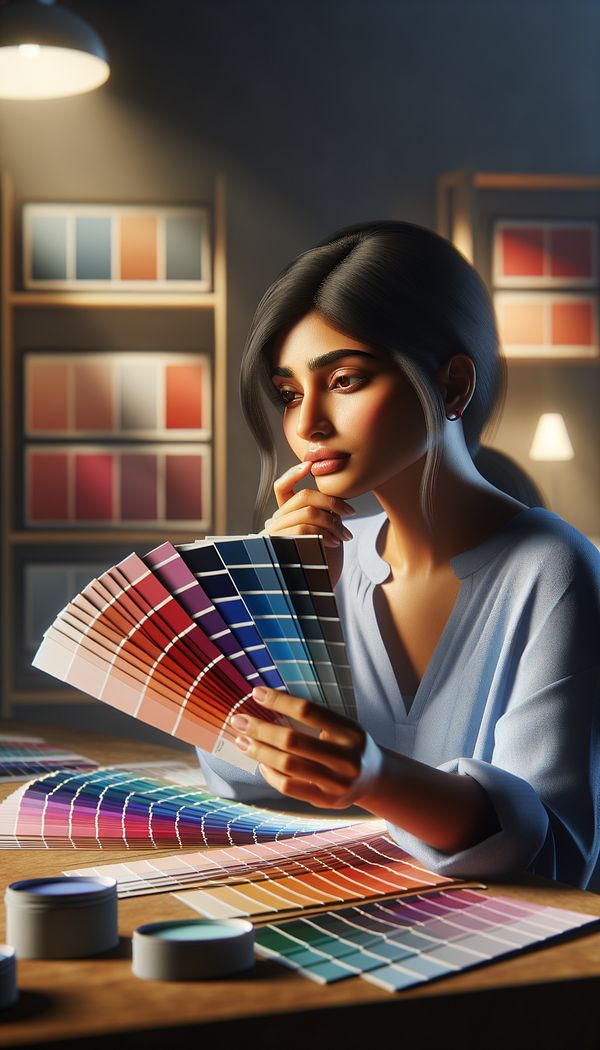What is Saturation?
Saturation refers to the intensity or purity of a color.
Description
Saturation is a key concept in understanding color within the field of interior design. It describes the intensity or purity of a color, which directly impacts how vivid, rich, or muted a color appears. In essence, saturation measures the degree to which a hue differs from a neutral gray of the same lightness or value, providing insight into how 'full' or 'pale' a color looks.
Saturation is an essential tool for interior designers when creating a palette for a space, as it can significantly influence the mood and atmosphere. Highly saturated colors are typically seen as bold and vibrant, adding energy and vivacity to a room, while less saturated colors are more subdued and can create a calming, soft environment. Understanding and manipulating saturation allows designers to achieve a desired emotional response and aesthetic appeal in their projects.
It's also worthwhile to note that the perception of saturation can be affected by lighting and adjacent colors. This interplay makes a thorough understanding of saturation, along with other color theory principles like hue and value, crucial for effective interior design.
Usage
When designing a living room with a lively and dynamic atmosphere, an interior designer might opt for highly saturated colors like a vivid red or a deep blue. Conversely, for a spa-like bathroom aiming to evoke serenity and relaxation, the designer might choose less saturated colors, such as soft pastels. Saturation can also be adjusted within a single color scheme to create depth and interest, or to emphasize particular elements within a space.
FAQs
-
How does saturation affect the mood of a room?
Saturation can significantly impact the mood of a room. High saturation colors are associated with energy and excitement and can make a space feel more lively and vibrant. In contrast, low saturation colors tend to be more relaxing and soothing, creating a calm and serene atmosphere.
-
Can lighting affect the perception of saturation?
Yes, lighting can affect how we perceive saturation. Natural and artificial lighting can either enhance or diminish the intensity of colors, altering their perceived saturation. This is why the same color can look differently vivid or muted under different lighting conditions.
-
Is it possible to adjust the saturation of a color without changing its hue?
Yes, it's possible to adjust the saturation of a color without altering its hue. This can be done through various means, such as mixing the color with either black, white, or gray, or digitally through software that allows for the manipulation of color properties.
Practical Application
To successfully apply saturation in your interior design projects, consider the overall mood and theme you want to achieve. Use high saturation colors for spaces that should feel energetic and alive, and opt for lower saturation for areas meant to be calming and restful. Additionally, when working with a color scheme, vary the saturation levels to create depth and highlight specific elements or areas within a space. Keep in mind the impact of lighting and ensure to assess your color choices under the lighting conditions they will be exposed to.
-
Lighting111 articles
-
Color & Patterns154 articles
-
Space Planning & Layout134 articles
-
Decorating Principles & Elements330 articles
-
CassapancaA Cassapanca is an Italian Renaissance chest, often ornately decorated and used for seating as well as storage.
-
MoroccanMoroccan refers to a design style influenced by the culture, architecture, and art of Morocco.
-
Gainsborough ChairA large and comfortable armchair of British origin, known for its open sides and upholstered seat and back.
-
Asian StyleAsian Style refers to the interior design practice that incorporates elements inspired by the countries and cultures of Asia.
-
Interior DecoratingInterior decorating involves enhancing the aesthetic appeal and functionality of a space using various decorative elements and design principles.
